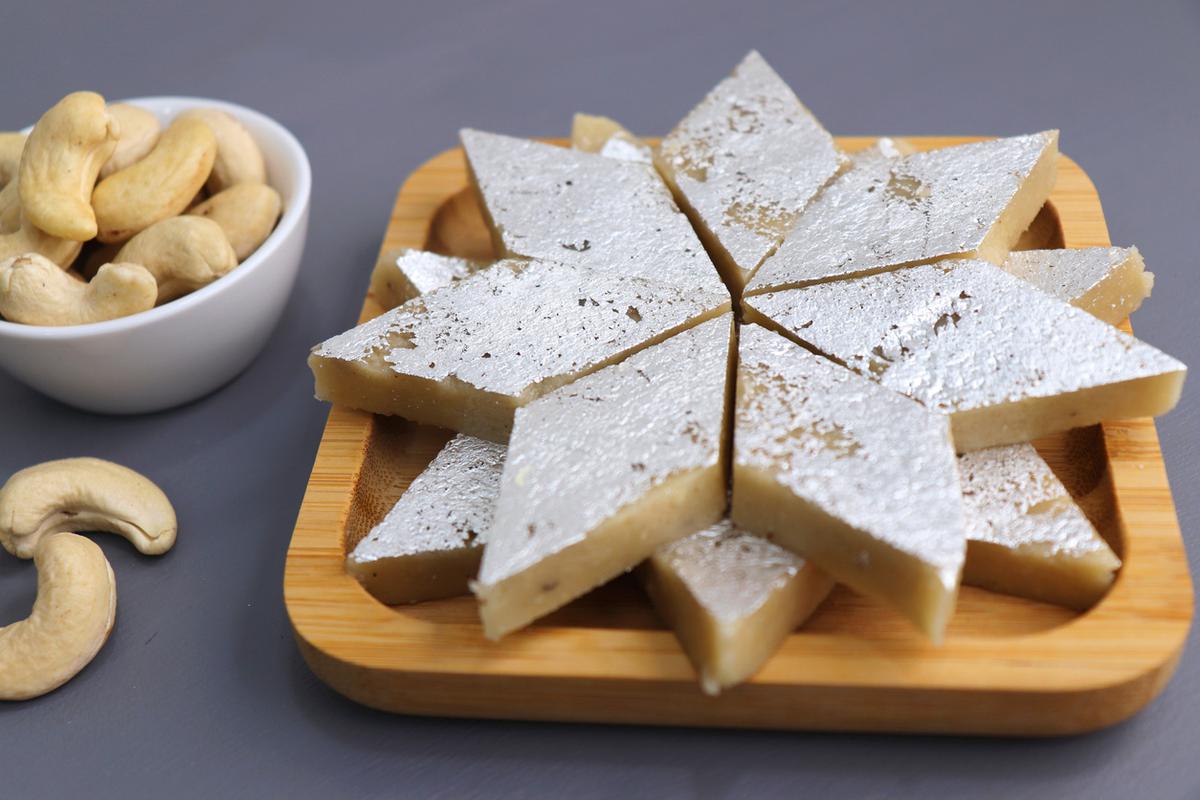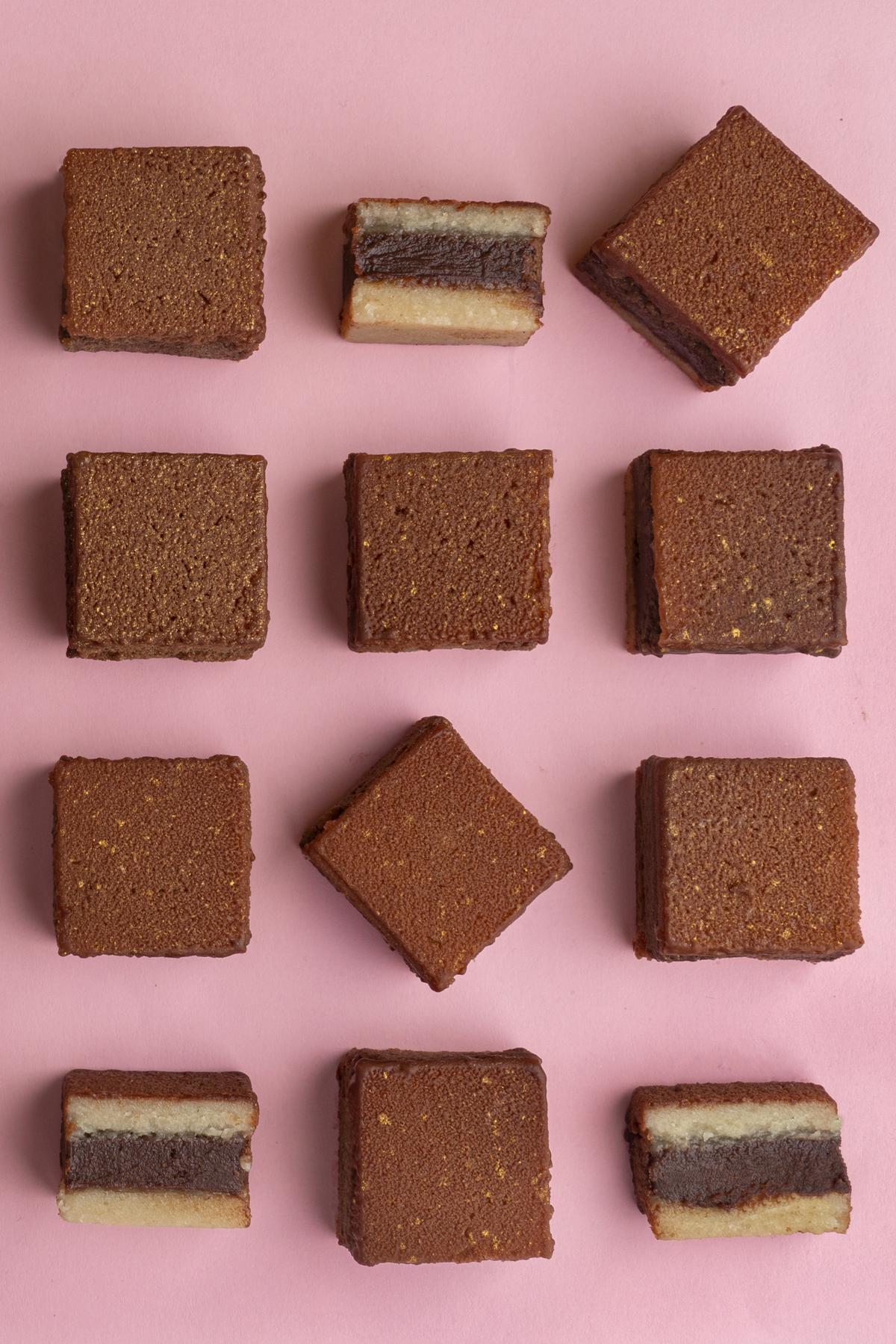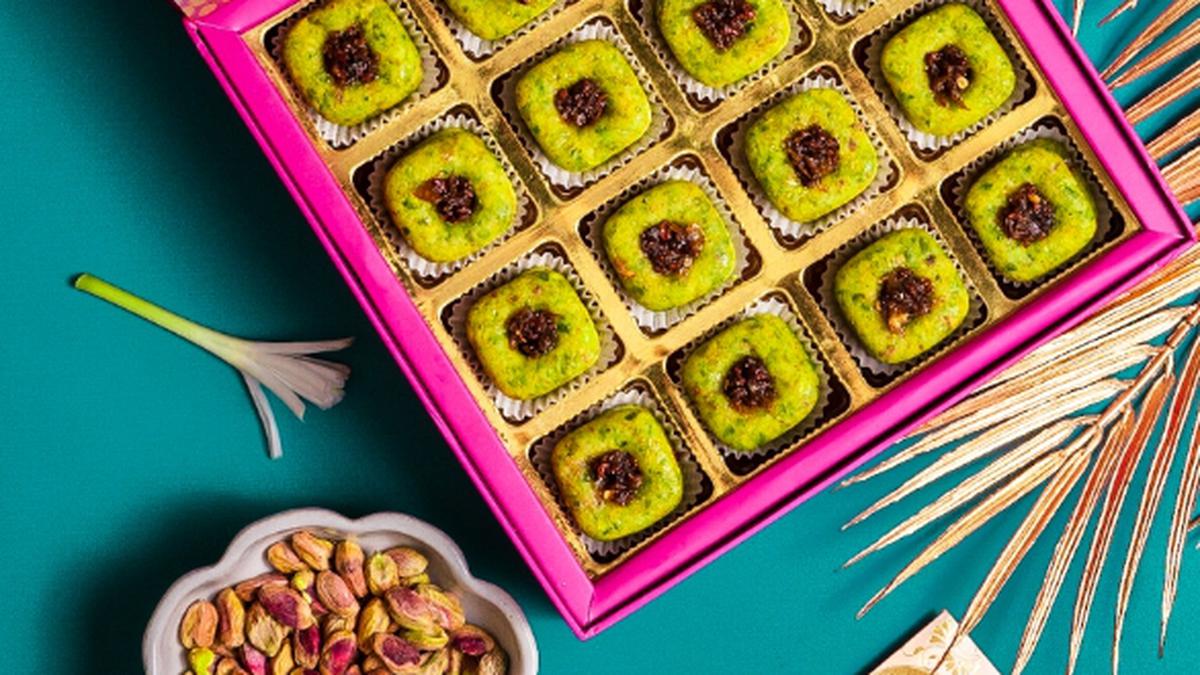I could not have chosen a more apt time of the year than Christmas season to write about perhaps one of the greatest hits of the Christmas sweet platter — marzipan.
At my home, the much-hallowed sweet I dub, the ‘Queen of the kuswar’ — which is what we Goan folk call our Christmas sweet selection — is the final result of an almost two month-long prep. One that begins its annual journey around the first week of November. From then on there’s an almost 6D-like multisensory overload of all things marzipan…
I hear it angrily gurgling away in Mum’s old, treasured copper pot as it cooks its way to completion. Each bubble plopping with an almost volcanic intensity. The heady aroma of the pot’s unctuous, molten contents wafting its way from the kitchen into my office. In the dining room, I see balls of cooled, solid marzipan being fashioned into tiny apples and oranges. Some moulded into snowflakes and portly Santas by my home-confectioner mother and her retinue of seasonal helpers.
But the sense that stimulates me like no other is taste. I surreptitiously pilfer away a few blobs of unmoulded marzipan and take them back with me to my writing desk. Here, I savour the creamy, sweet and delicate almond-meets-rose flavour that each morsel is imbued with.
Cakes toppped with fondant icing and marzipan.
| Photo Credit:
Getty Images/ iStock
Each bite takes me back to my childhood when marzipan was all I thought about, as Christmas and Easter season rolled by. For each Christmas, we’d have everything from the aforementioned fruits and moulded Christmas motifs to the traditional rich plum cake that was topped with thick layers of fondant icing and marzipan. Come spring at Easter, I’d see an entire ‘poultry farm’ of marzipan chickens and eggs of all sizes materialise before my greedy eyes. Always marzipan at the center of all things delicious!
Eastern or European?
Interestingly, marzipan is perhaps one of those sweets the origin of which is the subject of much conjecture. While some believe the almond, egg white and sugar candy to be the invention of a 15th century pharmacist in Tallinn, Estonia, who wanted to sugarcoat (quite literally) his medicines, there are those who look eastward. Specifically towards ancient Persia, where almond paste, sugar and rose water were knead together to amalgamate into a sweet treat like no other.
Interestingly, in India too, we have our own localised versions of marzipan that have existed for eons under various names. And in various permutations and combinations adaptive of local customs and dietary restrictions. Even the availability of ingredients has had an impact on our idea of marzipan. One that sees almonds being eschewed in favour of the easier to procure (and cost-effective) cashewnut. At home, we even make a super easy, four-ingredient, cheat’s version of marzipan that ticks all the boxes. (Recipe below)
Katli in the fray

Kaju katli, marzipan-like but made with ground cashewnut and flavoured with rose water and saffron, and topped with silver leaf.
| Photo Credit:
Getty Images/ iStock
Speaking of cashews, it is almost impossible to talk of marzipan and not mention its desi doppelganger (or predecessor, perhaps!?), kaju katli (also called kaju barfi), in the same breath. This sweet and its permanence as a festive treat, especially at Diwali, is legendary.
Flavoured with rose water and kesar (saffron) and always topped with silver leaf. Once cooled, the sweet can be cut into diamond shapes, fashioned into pedas or rolled into mini cigars.
Regional variations of the kajukatli see everything from kewra (screw pine) in places like Uttarakhand, and cardamom in Maharashtra, used in lieu of saffron. While in Tamil Nadu, it is not uncommon to find a version of kajukatli made with jaggery replacing the sugar component for a more earthy taste.
But circling back to marzipan, many believe that its journey to India is not a linear one, but one that completes a circle. Originating from kajukatli and travelling westward to Persia and beyond to Europe becoming marzipan. Which ironically, was brought back to India by the British and more pertinently, the Portuguese colonists to Goa, where it took deep roots once again among the local Christian community.

Bombay Sweet Shop’s triple-layered, gold-flecked kaju marzipan bon bon.
| Photo Credit:
Bombay Sweet Shop
Today, I see the marzipan- kaju katli hybrid and various interesting riffs on marzipan almost everywhere I look. My box of paan flavoured pistachio katlis from Mumbai-based The Meethi Elaichi Co. at Diwali this year reminded me so much of a matcha flavoured marzipan I tried in Tallinn.
Another gourmet mithai brand, Bombay Sweet Shop (BSS), augments this marzipan- kaju katli affinity even further with their triple-layered, gold-flecked kaju marzipan bon bon. Inspired by the Christmas market chocolate-coated marzipans in Europe, chef Girish Nayak, or ‘chief mithaiwala’ as he calls himself, says that at BSS, they make the kaju katli base in the traditional method and then roll it out like cashew marzipan, slathered with a dense layer of bittersweet chocolate that’s then bedazzled with edible gold glitter. Merry Christmas, indeed.
Recipe: No-cook eggless marzipan (courtesy Ann Dias)
Ingredients
150 gm broken cashewnuts (unsalted and unroasted)
150 gm icing sugar
2 tbsp liquid glucose* dissolved in ¼ cup of warm water
3-4 drops almond or rose essence
(*Liquid glucose is easily available at most grocery stores specialising in baking ingredients)
Method
1. Grind the cashew nuts into a fine powder by pulsing them in a food processor. Then sieve to remove any large bits which you may grind and sieve again.
2. Either by hand or in a food processor, blend in the icing sugar and the ground cashewnuts one teaspoon at a time along with a few drops of almond or rose essence. Make a dough using the warm liquid glucose solution, adding a little at a time.
3. Once firm, divide into as many parts as you’d like to colour using different liquid food colours.
4. Form into various fruit and vegetable shapes, either by hand or by pressing into silicone or rubber Christmas-themed moulds, using a little icing sugar if the dough gets a bit sticky.
The Mumbai-based writer and restaurant reviewer is passionate about food, travel and luxury, not necessarily in that order.






